Street photography has had a somewhat turbulent history, sometimes rejected by the mainstream photographic establishment, and also experiencing ethical dilemmas regarding the photographing of people without their consent. Regardless, street photography is now almost universally agreed upon as an important social art form, and the compact size of the iPhone makes it a great camera for taking discreet photographs in public places. In this article you’ll discover six great techniques to help improve your iPhone street photography.
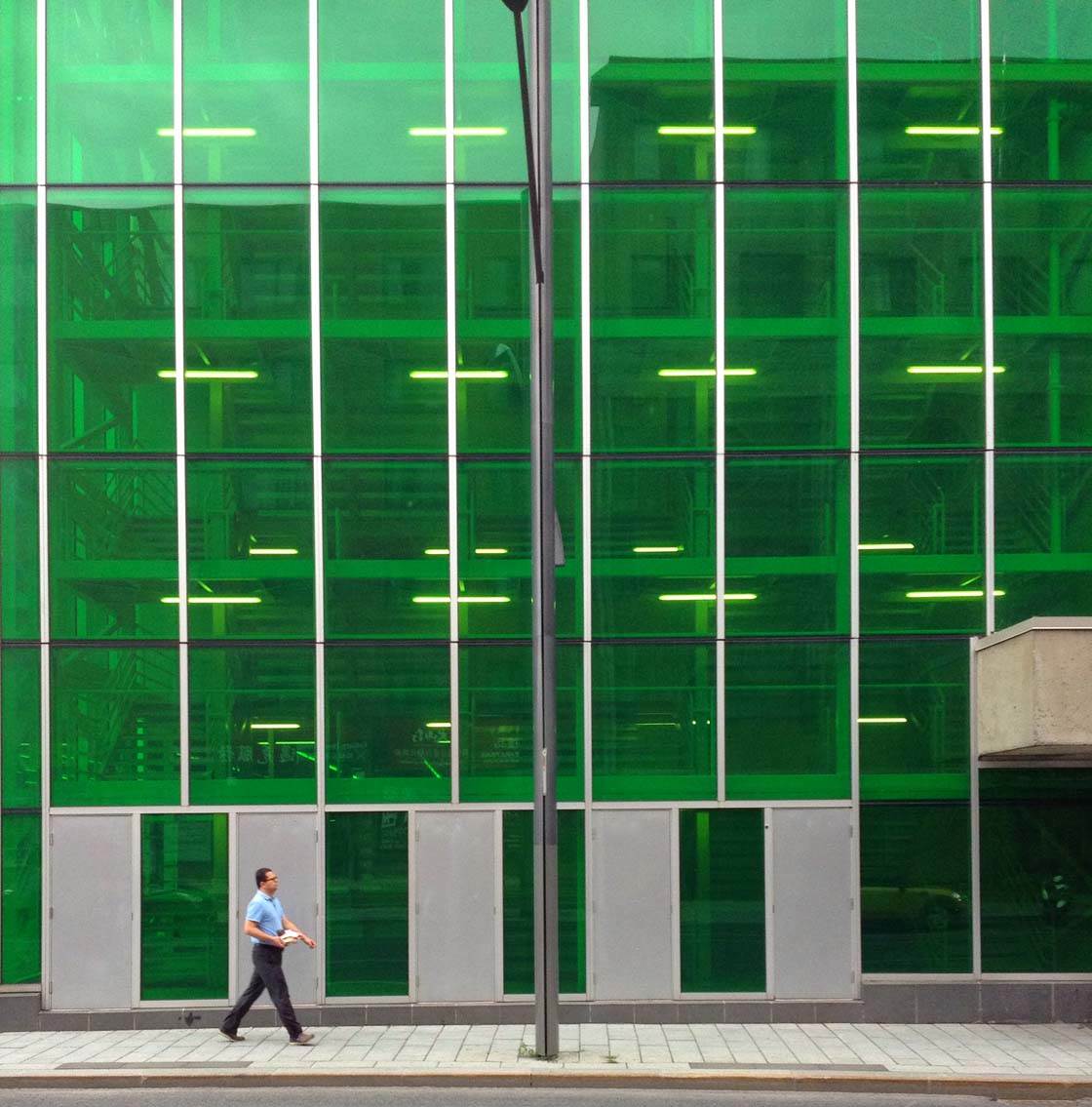
1. Convey A Sense Of Scale
A trap that I often fall into is having the person I’m photographing fill the entire frame. While this can sometimes be a good thing, in a street photo it can tend to weaken the photograph as the viewer loses the sense of place.
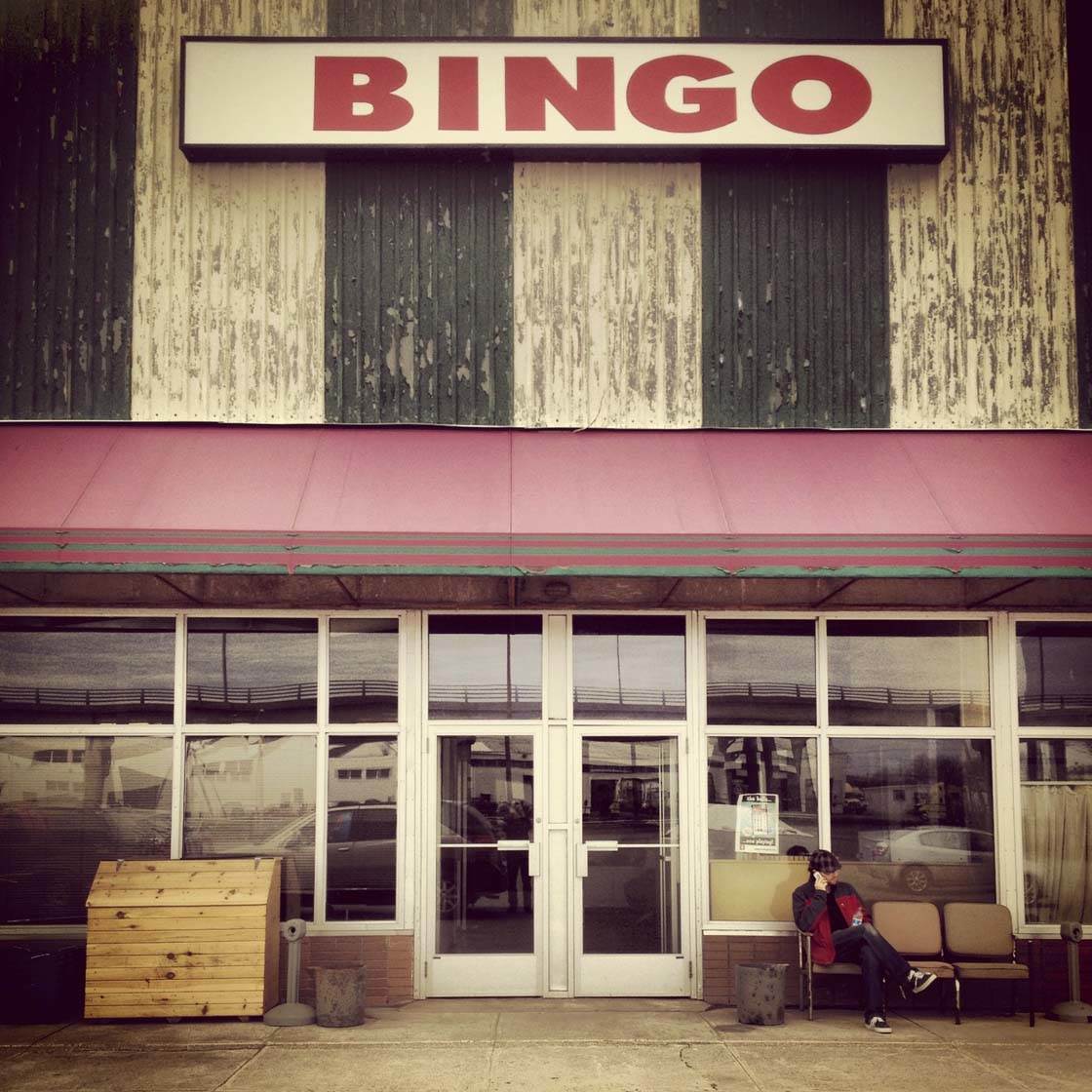
I suggest practicing photographing street scenes where the person is small in the frame, and the surrounding supporting elements (in this case the Bingo hall) tell the story.
In the sense that we’re referring to in this lesson, “scale” refers to the size ratio of the main subject (the person) in relation to the supporting elements (usually the background). Varying the scale of the same scene can elicit very different emotional responses from the viewer.
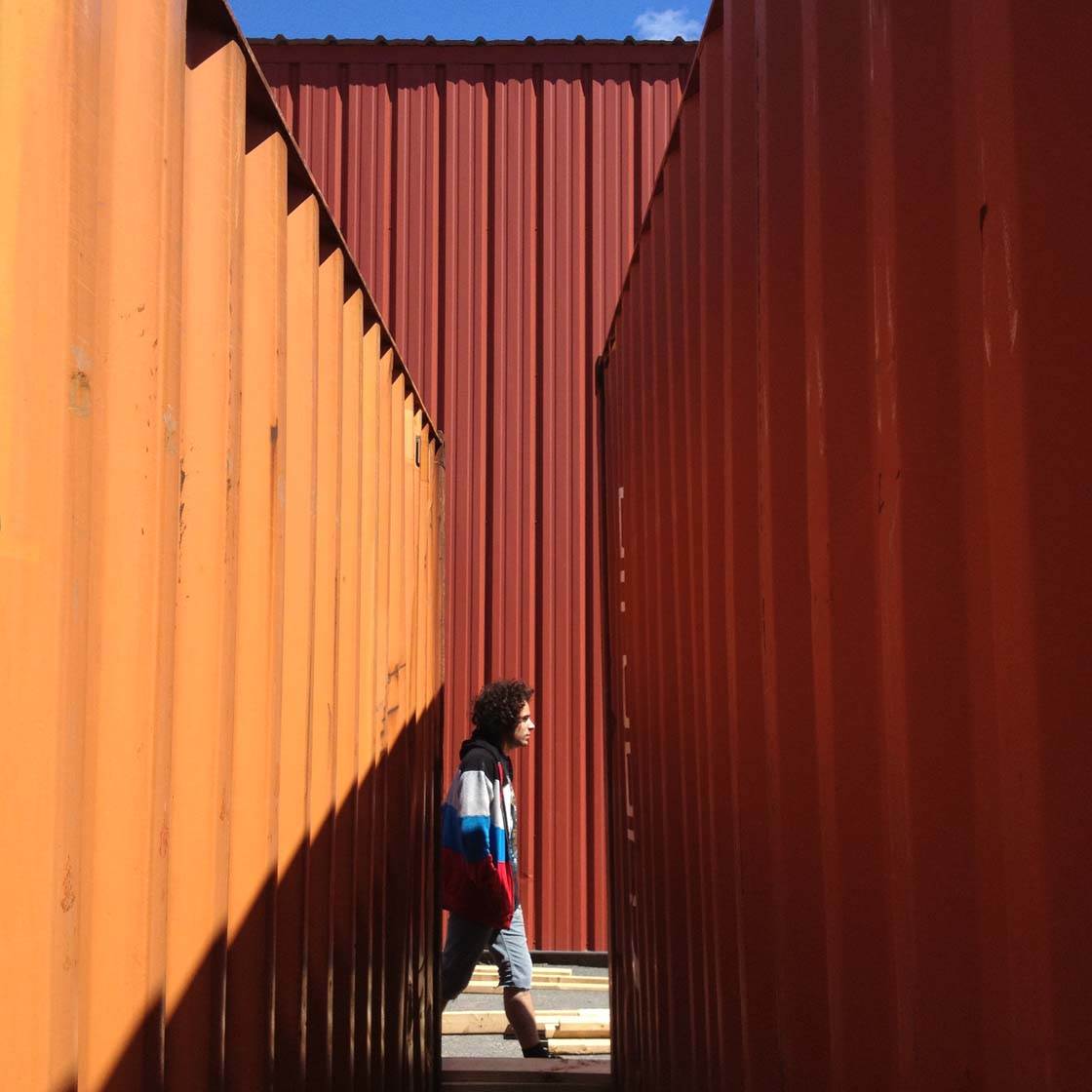
Give this a try in your own town – find a cool background that tells a story, and ask a friend to stand in for a few test shots. Try a few options at different distances from the subject and background, and see which version you like the best when you’re done taking the test shots.
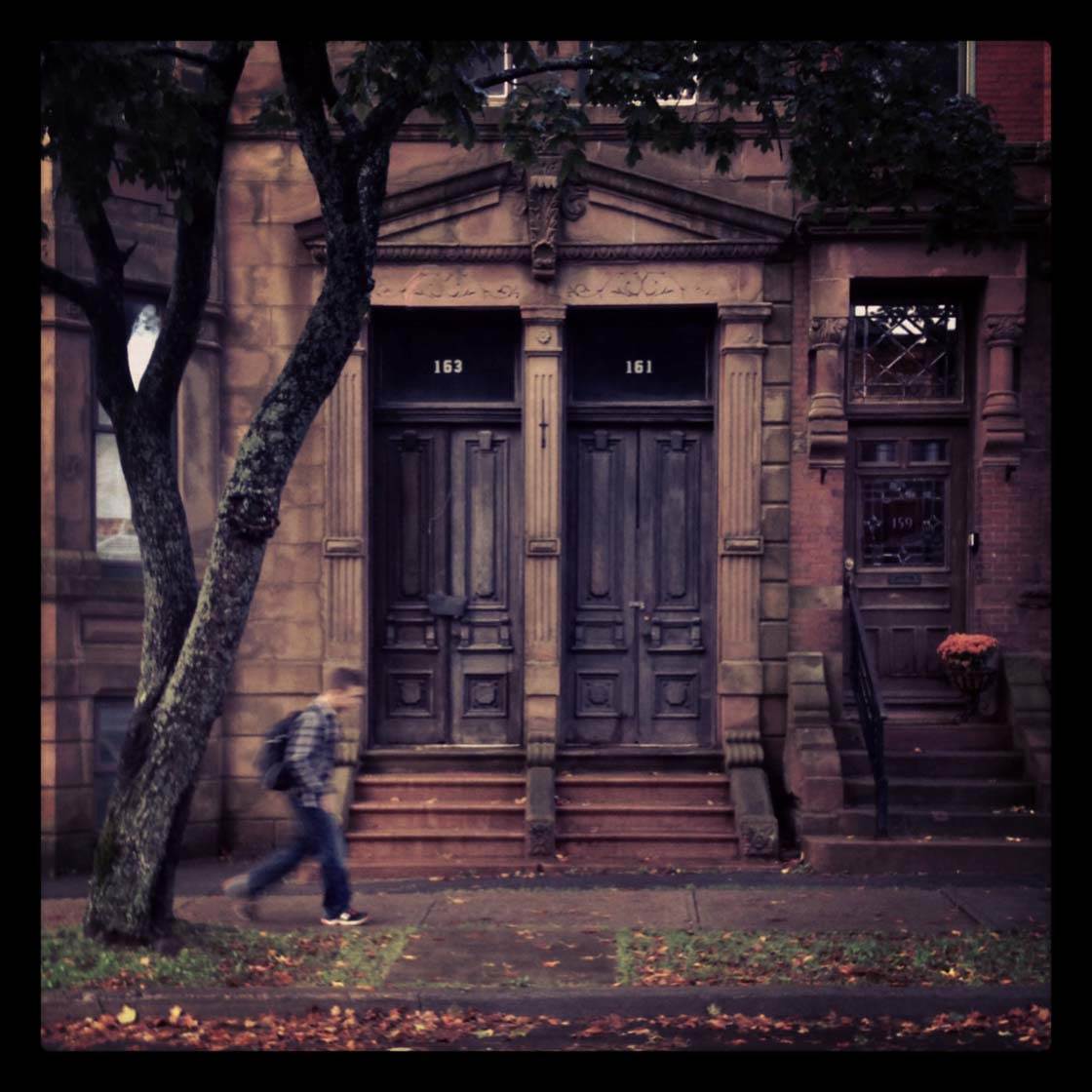
This is a situation where there are no solid rules. Much of your decision making will come from how you feel when looking at your iPhone screen while composing the shot.
2. Search For Reflections And Shadows
At certain times of the year this red building is blessed with reflections deriving from the sun shining on opposing windows from another building with similar windows. The resultant reflections are always cartoonish and visually interesting.
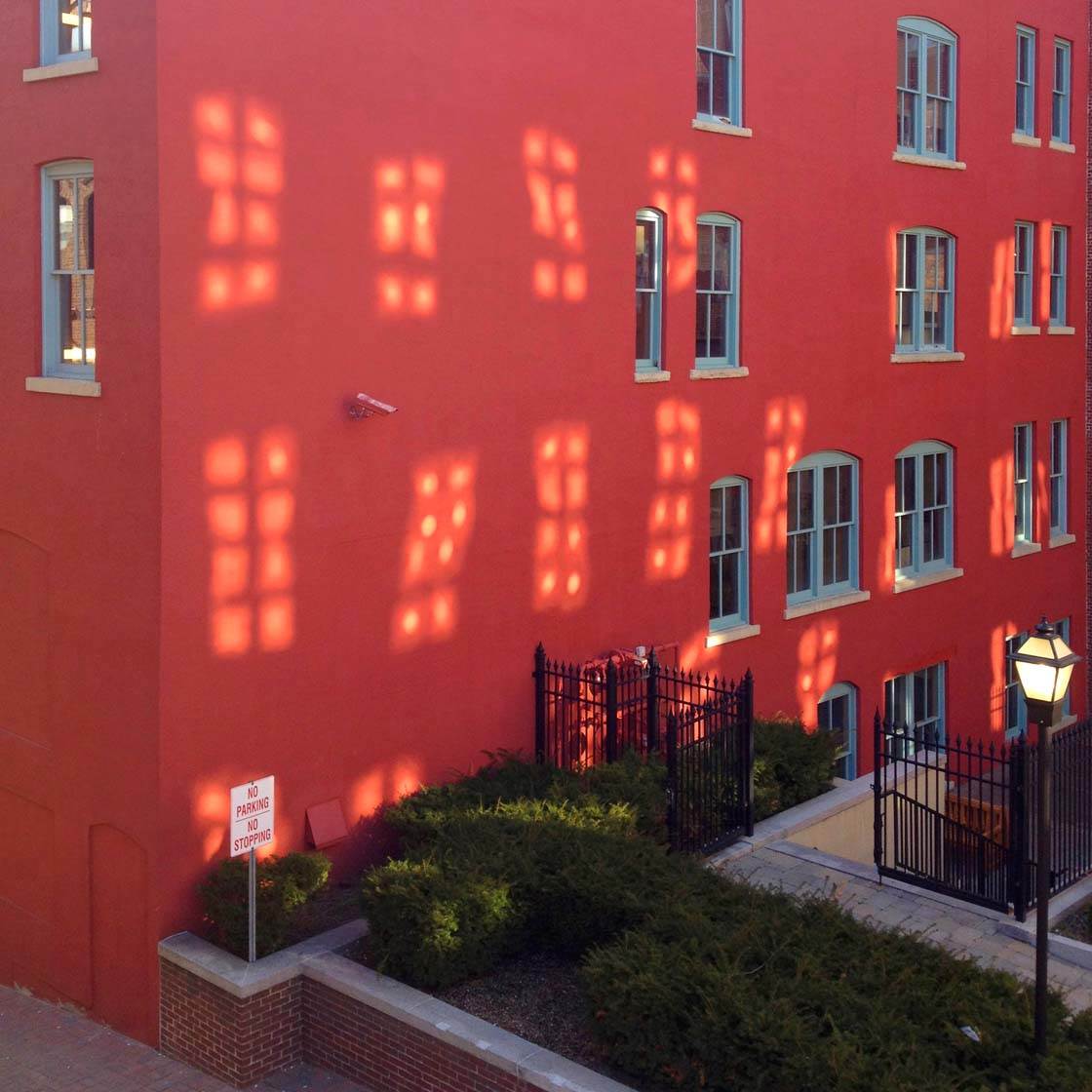
Whenever this happens (usually near supper-time) I point out this scene to the people who I’m walking with. Most often each one of them will look up and with a surprised expression tell me that they’ve never seen those reflections before.
As a professional photographer, every inch of visual real-estate that is before my eyes gets analyzed and judged. I ask myself “Will this scene make for a great photograph?” I’m always looking up when I’m walking, and also side to side, and down towards the ground.
Reflections of any type are favorite photography subjects of mine, and I encourage you to allow the surrounding walls, buildings and streets to act as a canvass to explore shadow and reflection photography.
When my friends look through my Instagram feed they almost always ask how I’m able to see so much more of the same street that they too walk down each day. The answer is to train your mind to search out potential photographic scenes all of your waking day.
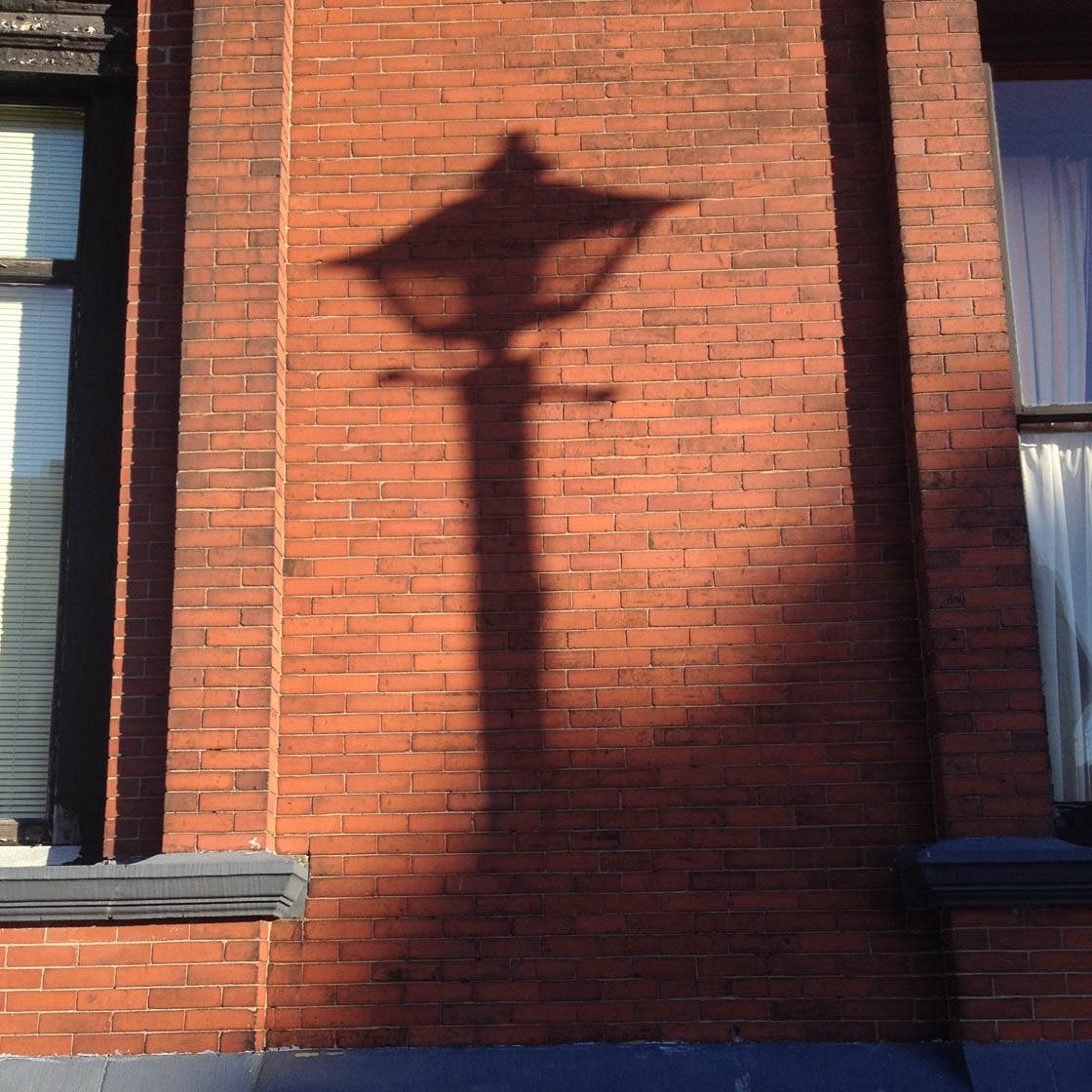
This may seem daunting, but why not start out by telling yourself that each time you walk to and from work, you’ll look for interesting reflections or shadows? Tell yourself that you’re going to form a new habit. Say to yourself “Every day I will see the world as a potential for creating art.”
Bad habits come easy, good habits are a bit harder to become ingrained in our mental process. Working toward deepening this habit of “seeing” is certainly worth the effort.
3. Photograph Humor
Friends of mine live on a historic street in Saint John, New Brunswick, Canada (my hometown), where some important and famous Canadian and International public figures once lived. Many of the homes have plaques that were placed by the city that explain the historical significance of the particular home or building.
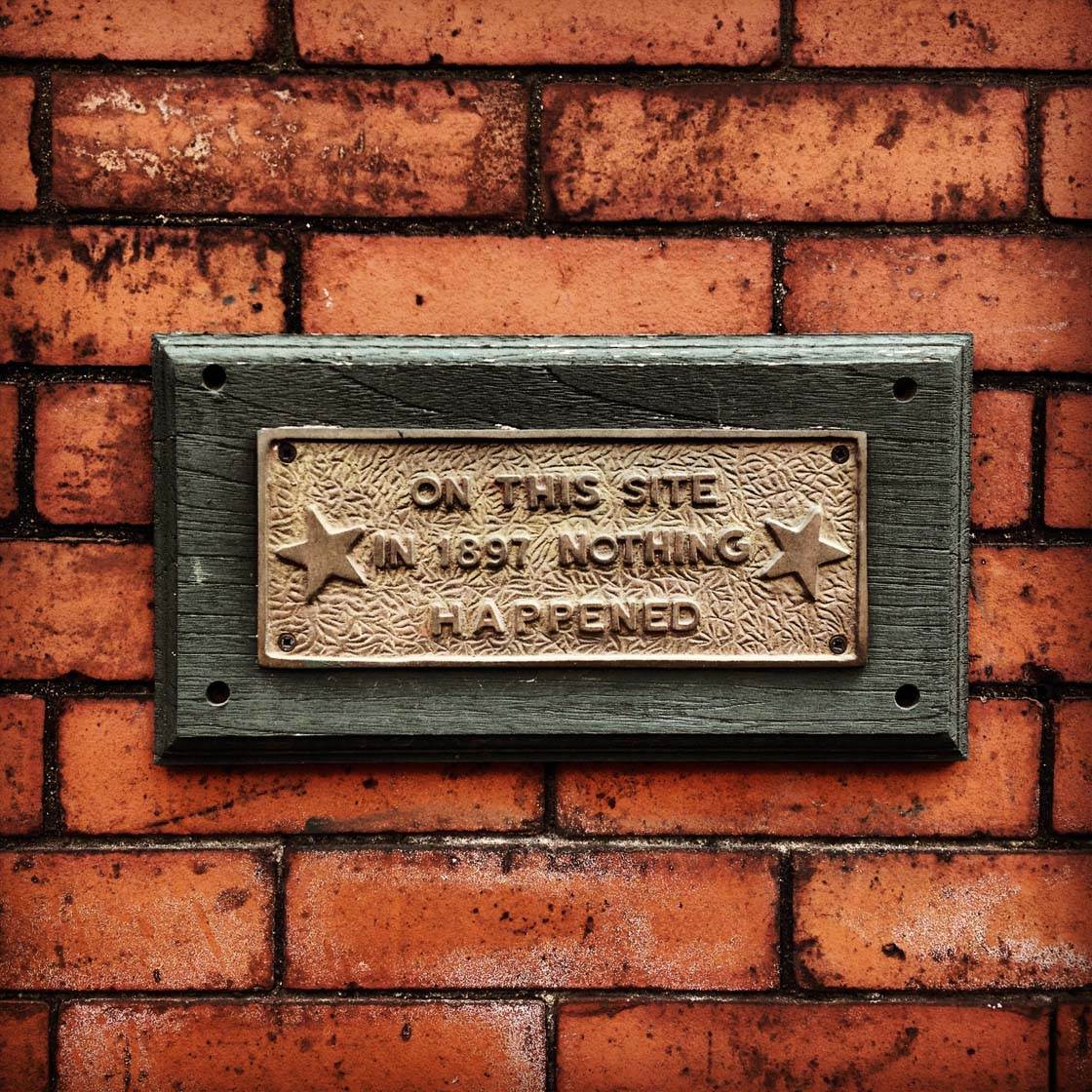
On this house however, it appears that 1897 was a boring year. When walking the streets there will almost always be an opportunity to photograph something funny. Remember, street photography doesn’t always have to have people included in each image. What you are doing is capturing a slice of human interaction within (usually) urban environments.
I once walked by a house in my city with a painting of Elvis proudly displayed in the front window. My guess was that this was not intended to be ironic, thus the enjoyment that I received from taking the image and reading the subsequent funny Instagram comments.
4. Look For Juxtaposition In A Scene
The dictionary definition of juxtaposition is “an act or instance of placing close together or side by side, especially for comparison or contrast.”
When practicing street photography we would do well to always look for two scenes that are different yet complimentary. As in the case of this photo, the historic building and the modern building are juxtaposed and complimentary.
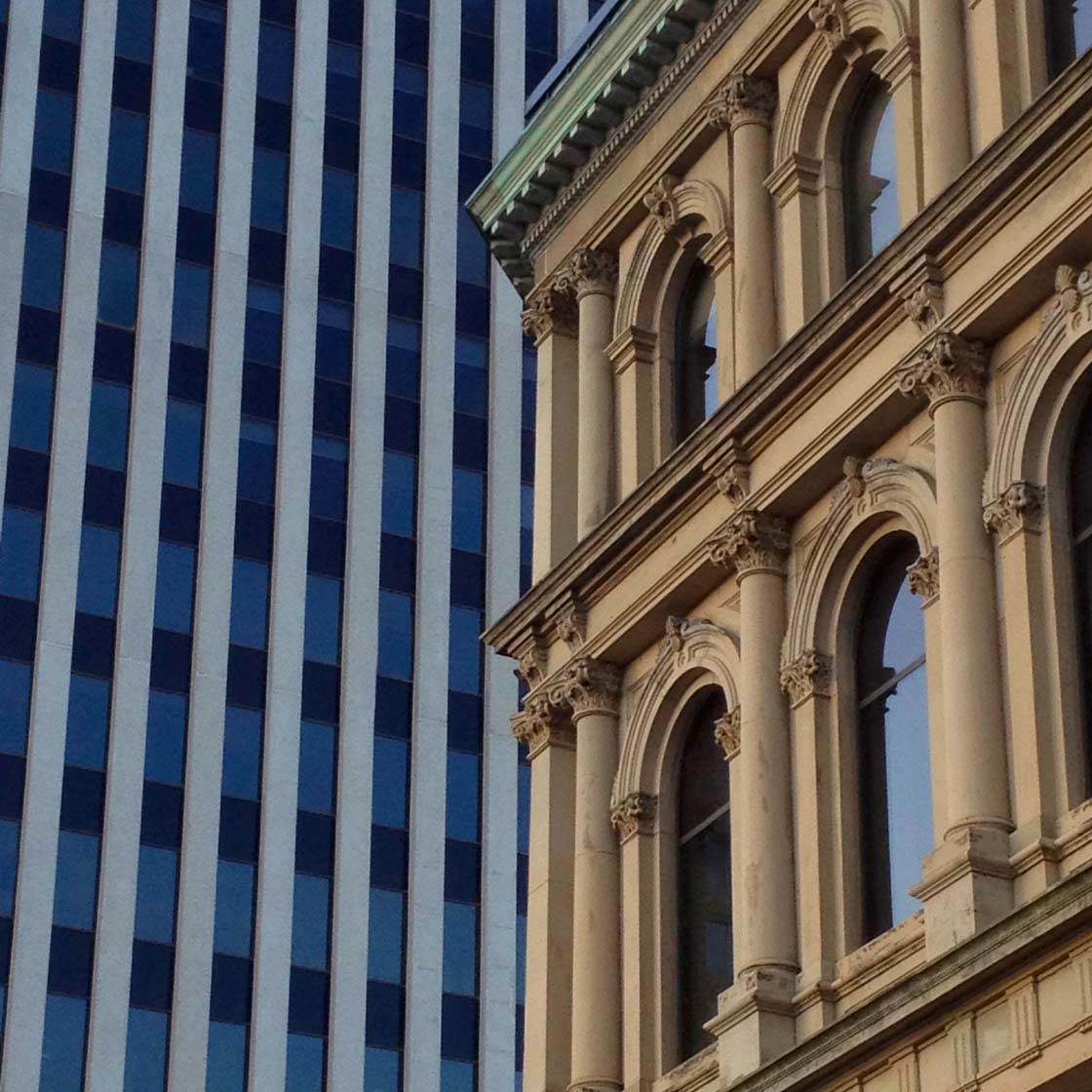
The two subjects are of the same class (buildings), thus have a complimentary aspect. But they are of a vastly different era and architectural style, thus the state of juxtaposition.
Try looking for such juxtaposing scenes in your own city or town, and I’m sure you’ll come up with some really interesting photographs!
5. Pan Your Camera With Moving Subjects
When walking from your car to work, or from your bus to school, I advise everyone to have their iPhone out in their hands, ready to shoot. If your camera is in your pocket, many scenes will have already past before you had a chance to get the camera app ready to roll.
Such was not the case with this group of pigeons, as I was ready with my iPhone in hand. I ran toward the birds expecting a mad rush away from the human intruder, and they reacted as I suspected.
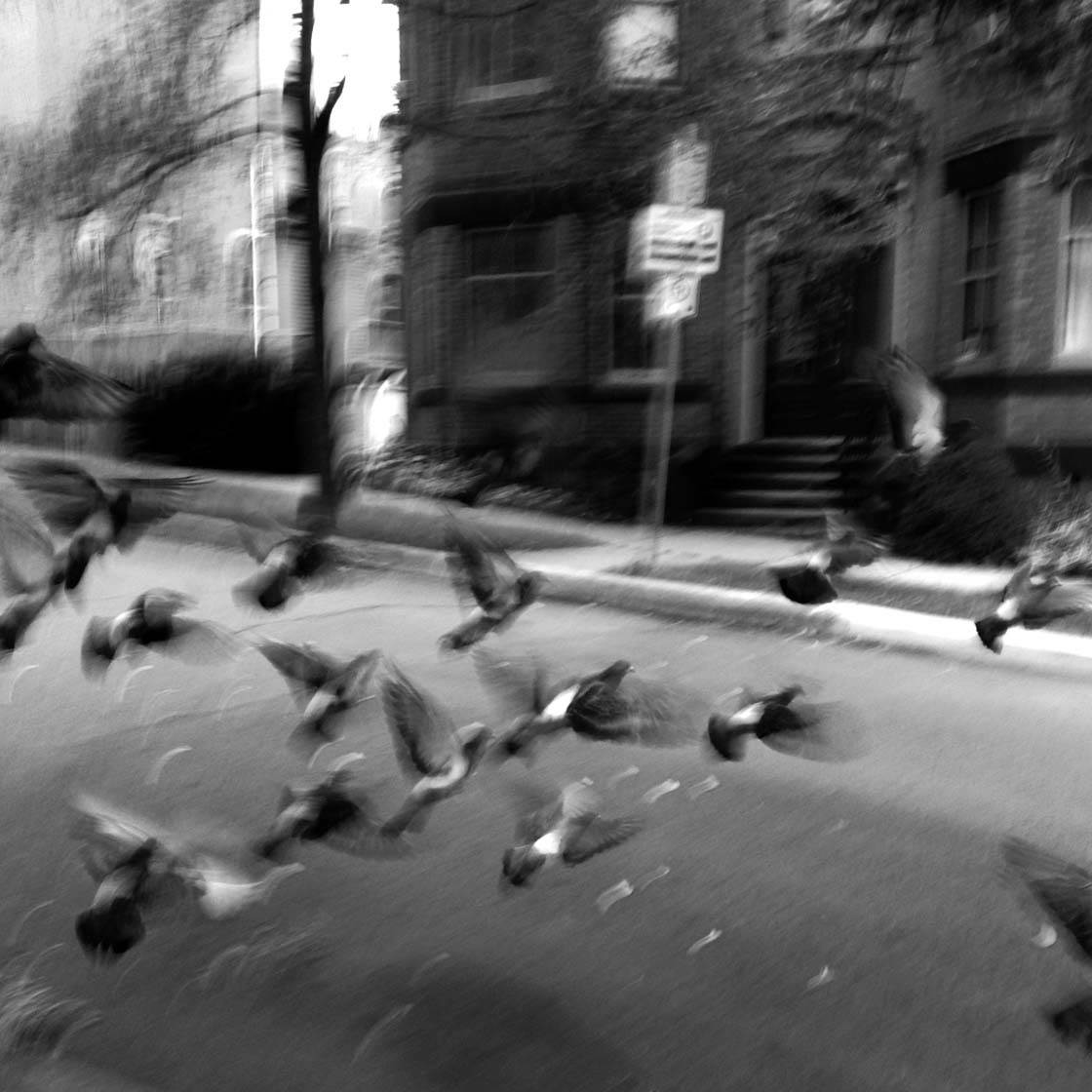
As I took the photo, I panned the iPhone quickly to track their fast-paced movements, and came up with an impressionistic style panning image. Panning is simply the act of moving the camera, usually in the direction of the moving subject, during the exposure.
You too can take advantage of this panning technique whenever you’re confronted with fast moving subjects. The faster you move your iPhone from left to right, up or down, sideways, etc. the more motion blur you will end up with.
Panning isn’t an exact science – for every ten tries you may only get one good image. Practice is key to good panning shots as the more you do it, the more you’ll understand how fast or slow you need to directionally move your iPhone to get the results that you’re after.
6. Convert Your Images To Black And White
I was eating lunch one noon-hour in my local city market when I looked out of the window and saw this worker loading trash into a dumpster. I grabbed my iPhone and took this shot, but I wasn’t very pleased with the result.

Before deleting images that don’t grab me, I often try a black and white conversion to see if the images become bolder and worthy of presenting. By using the native iOS camera editing functions, I turned the photo to black and white, and thought that the image became a bit more visually dynamic.
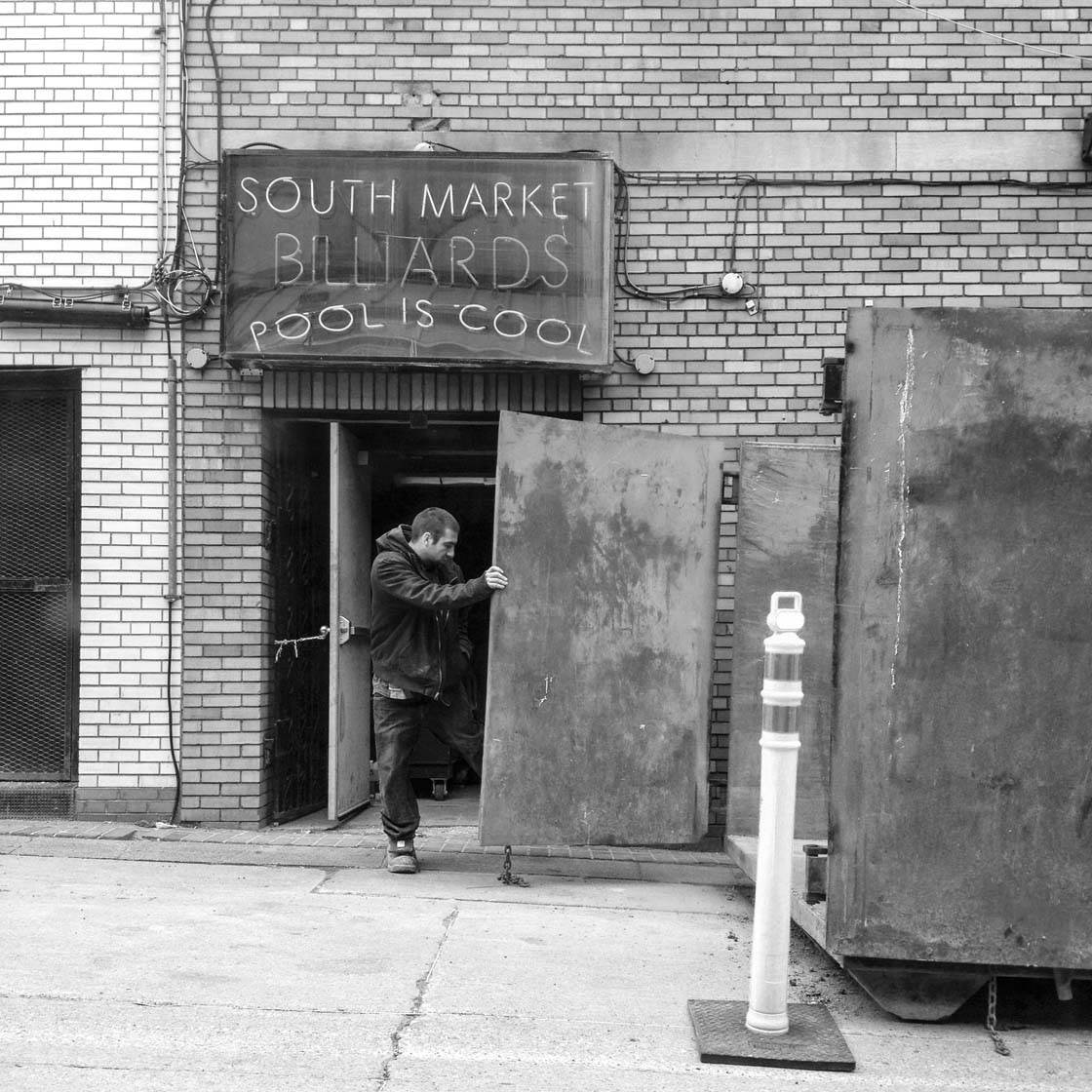
While this photograph is not a favorite of mine, it does illustrate how a simple black and white conversion can often save lacklustre images.
Almost every photo app in existence has the ability to either desaturate your photograph, or give you various black and white options. Give this technique a try prior to deleting your next mildly acceptable iPhone photo.
Conclusion
With these six tips I hope that you can stretch your creative muscles and delve into the dynamic world of street photography. The iPhone is a great tool for this art form, as it’s always with you and ready to fire.
Your biggest challenge will probably be the familiarity of your surroundings. Pretend you’re a tourist photographer seeing your city or town for the first time, and you will have many more photo opportunities present themselves to you. Above all, have fun!


Thanks Mark, great street photography tips! This is definitely one genre that I don’t shoot much but would like to get better at. Will definitely try out some of these techniques 🙂
I just refuse to believe these photos come from a cell phone. Any image of my cell phone are gritty, not clean and crisp as these are.
Hi Debbie, thanks for leaving a comment! All photos in this tutorial were taken by me on an iPhone 4s. It is an older iPhone, but still takes great pictures.
How are they so crisp and clean?
Hi Debbie, what mobile do you use currently to take photos? Maybe I can help you with getting more punchy images. The iPhone camera lenses are already very sharp, but if you don’t have a mobile with a good lens, sometimes underexposing the photos gives the resultant images a snappier look. Overexposure will usually “wash out” your images, making them appear unsharp. Do you play around with exposure on your mobile’s camera ever? Talk soon
Samsung Galaxy S3. I do play with the exposure. My best images are in bright light. However Im not always in bright light. Thank you for your feedback. I get so disappointed with the phone images. I see so many nice images out there.
I had the exact same problem for years. I have an iPhone 5 and have had it for over 2 years now, but I found this website and the free videos here about 3 weeks ago. Not every picture is great, but it is like my phone knows that I read this blog and my pics come out 100x better and most are crisp and clear!
This blog, the tutorials and videos on this site, and the tips here have been amazing for me. I can’t even understand how dramatic the change has been.
I hate to think its my Samsung Galaxy.
Debbie, I would say keep shooting with the Samsung until you are sure that you have reached a point where you artistically are ready to upgrade to a new device. If you do a search for used iPhone 4s or 5, you can probably find them cheaply, but make sure the lens is not scratched. Until then, shoot as much as possible with what you currently have, and if you don’t like the visual results, at least you can fine tune your composition and creativity. If you want to send me some sample images to do a constructive critique I am at mark@hemmingshouse.com
Great advice. Thank you
I am sure your phone is fine. My wife has a Samsung Galaxy Note 2, which came out close to the same time as the Galaxy S4. Her photos were always better than mine (until I found this blog). Here photos are hit and miss, but she does have quite a few crisp photos, so I think you will be happy with your phone. For me, the biggest difference has been from practicing stability advice (camera shake), and not zooming in. Now if I’m not able to get close enough to get a good shot of what I want, I look for something else interesting that I can get a good shot of.
Thank you. I do get some crisp shots, however, there has to be a lot of good light. For instance if I try to capture my christmas tree lights, the image is very gritty.
That is excellent news Billyfrog, thanks for the great feedback!
Hi Debbie, I didn’t know how to use my iPhone camera either but, with so many great tutorials from iPhone Photography School and other sites I’ve been able to learn a great deal and still learning. If you would really like to learn and get most of your phone’s camera, immerse yourself on the internet, there are several sites with tutorials and tips to learn from if photography is your passion. I gotta say, I’ve learned most of what I know form this site.
Below is an example I took with my iPhone and, I used to think my iPhone camera was not worthy and people taking pictures like this were lying posting they were taken with their phone! Don’t get discourage & good luck! 🙂
Excellent response Grisel! Thanks
I dont see the example.
Sorry, not sure why it didn’t load it up the first time, hope you’ll see it now! 😉
Wow, thats awesome. Very Nice
Thanks! Don’t gibe up, you can do it! 😉
Hi Debbie, my wife has the Galaxy S3 and her images are not as good as the iPhone, so maybe what you are experiencing is a mobile phone camera that is technically not able to match what you are seeing on-line with iPhones or better quality Android devices. If that is the case, it is good news as the problem is “not you”, you are probably doing everything correctly regards exposure, composition, and lighting.
Hi Prakesh, go for it! You already have all of the compositional skills needed, I am sure you will do excellent.